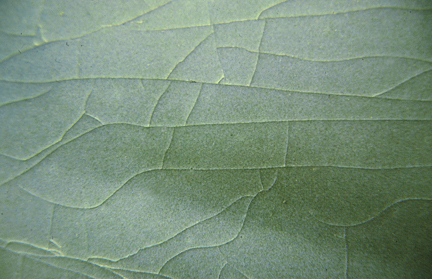The refinement and production of stoneware and porcelain reached its height during the Song Dynasty, and there were 5 'Imperial Wares' produced: Ding, Jun, Ru, Guan, and Ge. Ru wares are without doubt the rarest, and only a very small number survive, most in the Percival David collection in London. Specifically, Ru ware was for the exclusive use of the Northern Song emperor and aesthete Huizong, and are almost always glazed with pale bluish green celadons.This is a close up of a celadon from a Ru ware bowl in which the pronounced 'crazing' is very easy to see. Crazing is more commonly called crackling, and is the fine network of fractures in the glaze surface. Technically a glaze defect, crazing can often be quite beautiful. It results from a glaze that shrinks slightly more than the clay body during the cooling of the kiln. As pottery cools within a kiln, it shrinks. The clay and the glaze need to shrink at close to the same rate or an imbalance occurs. In the case of crazing, the glaze is shrinking slightly more than the clay, and in a sense, is stretched 'too tightly.' As this happens, stresses build up in the glaze surface, and it cracks, revealing a fracture. Here these fractures are widely spaced as aesthetically pleasing. The Chinese aesthetes who collected and valued this pottery called such a horizontally oriented crazing pattern, 'cicada's wing,' after the finely veined and transparent wing of the insect.
The Tartar invasions from the North in 1127 CE caused production of Ru ware to cease as the government fled to the southern capital at Hangzhou, and it is thought that some of the official court potters fled with their patrons and set up the Guan kilns and continued production.

Detail of a Ru Ware Celadon Glaze with 'Cicada's Wing' Crazing, Song Dynasty, Chinese


